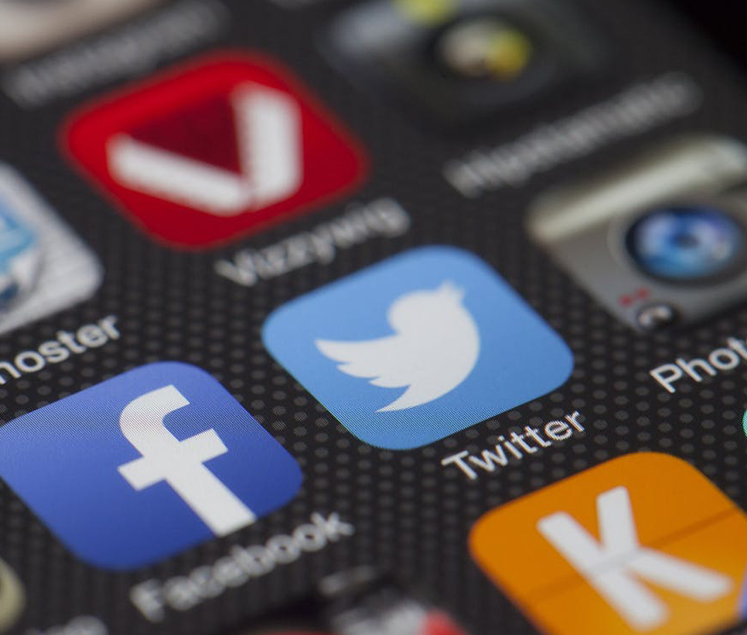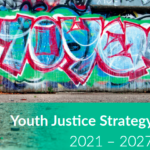Social Media’s Effects On Young People’s Mental Health

Social media is defined by Merriam-Webster (2014) as “forms of electronic communication (as Web sites for social networking and microblogging) through which users create online communities to share information, ideas, personal messages, and other content (as videos).” There are common characteristics of different social media websites. First, you are prompted to create a profile that you can upload a profile photo onto. Second, you begin to arrange a friend list of social media users you know. Third, you have the option to start a private chat with a private messaging feature.
Social networking sites act as a platform to tie us all together. A friend of a friend can pop up instantly for you to interact with if you choose to do so. Take Facebook for instance. Facebook offers a daily stream of recommended friends of friends or friends of friends of friends for you to add. Social networks exist with our families, our friends, where we work, our hobbies and interests, they just exist on a smaller scale. Social media websites expand this network on a wholly greater scale by laying out a social network map with connections you weren’t even aware of.
The origins of social media date back to 1997. It is globally recognised that Six Degrees.com was the first major social media website. Six Degrees.com functioned similarly to how Facebook operates now by allowing the user to create a profile, list their friends and surf their friends list. The original social media platform attracted millions of users. However, the business was shut down in 2000 due to unsustainability. It is estimated that while a substantial amount of people had an account with Six Degrees.com, not enough of their friends were actually online. Users were unwilling to meet strangers and as a result the social media platform could not last.
Social media really began to hit off in 2002 with the creation of Friendster, a website that in the beginning acted much the same as Six Degrees.com. Friendster promoted the idea of making online friends and connecting with others in a social network setting. Over time the website transformed into a dating website and then onto a gaming website. As of June 14th, 2014 the moderators suspended the website for the foreseeable future “We have thus made the decision to take a break and pause our services”. Not enough gamers joined the site as previously presumed.
Today some of the most popular social media websites are Facebook, Twitter, LinkedIn, Tumblr, Pinterest and Instagram. Created in 2004 by university students, Facebook boasts statistics of 1.18 billion daily users on average as of September 2016. The latest statistics from Twitter show there are 313 million monthly active users with 82% of active users on mobile. LinkedIn, the social media website for professionals wishing to connect, has more than 467 million members in over 200 countries and territories. More than 40 million students and recent college graduates have an account with the world’s largest professional network.
The rise in social media has become apparent. There’s no denying that social media is everywhere. You can access a social media account on your laptop at home or in public, on a portable tablet, an iPad and even on your mobile phone. In December 2015 the CSO released data on enterprise use of any social media in Ireland. It was found that 64% of Irish enterprises employing ten or more people used some form of social media account. Ireland ranked second in the EU-28 for enterprises’ use of social media. Malta had the largest percentage at 72%.
The CSO published a survey titled “Teenagers Vs Social Media” in an attempt to shed light on whether our teenagers are addicted to social media or not. Their sample population were 200 boys and 200 girls from the ages of 13-16 throughout Ireland. Questions in this survey included just how many social media websites was a test subject signed up to and how often were the sites accessed. The CSO also wanted to figure out what was the most popular social media website among these teens and what specific features attracted them so much to the website.
What was found in this survey? 67% of the test subjects said they would be unable to last a week without an internet connection even after 43% agreed they were not addicted to the internet. Over 90% of these 13-16 year olds were signed up to Facebook and over 70% were signed up to Snapchat. 98% of participants were found to have an account on at least one of the various social media websites and 91% had accounts on multiple websites. Conclusions drawn up by the CSO established that teenagers are indeed addicted to social media. Facebook was the most popular to teenagers but Snapchat was discovered to be the most addictive. The answer which kept on cropping up by test subjects when asked why they use social media was to stay in contact with friends.
In 2005 The Pew Research Centre began tracking social media usage for the American population. A decade later they released comparison charts portraying how the rise in social media has skyrocketed. Pew Research reports emphasise how social media has affected such things as work, how we receive and share information, our health and levels of stress. In October of 2015 a special analysis of 27 national surveys of Americans was published by Pew Research. The main findings continued to show that young adults (18-29) are the most likely to use social media at 90%. Only 12% of young adults used social media in 2005. A decade has brought the 78% increase of social media use in young people. What are the main attractions that draw us to social media and what are the effects?
“Based on consistent themes emerging out of focus group discussions, it is proposed that individuals use social-networking sites to experience selective,
efficient, and immediate connection with others for their (mediated) interpersonal communication satisfaction and as an ongoing way to seek the approval and support of other people“. (Urista, 2009)
A factor that draws young people to use social media websites such as Facebook is due to the easy and convenient way they are enabled to keep in touch with friends and family. An individual’s needs and wants can be filled continuously and instantaneously through the use of social media. This is the basis of uses and gratifications theory that can be applied to social media. The theory is centered around an individual seeking out media that fulfill their needs and leads to ultimate gratification.
UCLA’s Brain Mapping Centre found that when young people receive a substantial amount of “likes” on their social media pictures, the reaction in the brain is close to experiencing interactions with loved ones or winning money. A study from UCLA’s Brain Mapping Centre analysed the results of how 32 teenagers reacted to a social media website designed to replicate Instagram. It was found that the reward centre in their brains were highly stimulated by “likes” on their photo’s and this would eventually lead to greater activity on this website.
We are so consumed in our daily lives by instant messaging, ongoing notifications and news feeds that we don’t necessarily pay attention to how our mental health is being affected by such factors of social media. There are numerous research studies to prove that social media has a detrimental effect on the mental health of young adults and teenagers.
“I think it erodes normal human relations. It makes them more superficial, shallow, evanescent. One other effect is there’s much less reading. I can see it even with my students, but also with my children and grandchildren, they just don’t read much.” (Chomsky, 2011)
We all have an online persona, a persona which portrays half truths or a completely false reality. Clinical psychologist Ramani Durvasula told The Huffington Post “People actually think that social media is actually a clear window into somebody’s life. It’s not. And so parents, especially parents who may be at a distance from their child, probably think everything’s just great if they’re literally going just on social media.”
Young people who use social media on a daily basis are exposed to a continuous update of what their friends are up to, what their friends are saying and also what activity is being partaken on a specific social media website. All social media platforms give you a score, as in Facebook gives you the amount of likes and friends, Instagram and Twitter give you the amount of followers you have and LinkedIn gives you the effectiveness of your CV. There’s this constant idea of watching what everyone else is doing and comparing yourself, your online self worth to others. Social media can be highly competitive.
A study by the American Psychological Association in 2014 shows how participants who used Facebook more frequently had lower self esteem than those who didn’t use it as often. The undergraduate students tended to evaluate themselves more poorly the more active they were on Facebook. Frequency of Facebook use was also associated with an increase in the extent to which participants reported making social comparisons on Facebook. The general conclusion was that young active users tended to make upward comparisons leading to increasingly poorer self esteem.
With the development of social networks, the time children and adolescents spend in front of the computer screens has significantly increased. This has led to the further reduction of intensity of interpersonal communication both in the family and in the wider social environment. Although social networks enable an individual to interact with a large number of people, these interactions are shallow and cannot adequately replace everyday face to face communication.
The National Centre for Biotechnology Information conducted a study in 2012 that found a direct correlation between depression and social networking.
Frequent social media use can also have an effect on young people’s developmental and social skills. We live in the technological era, the new media wave. The next generation of children are learning how to use a mobile phone, an iPad, at the same time they are learning how to write. Children and adolescents know technology inside out and they’re spending more time communicating through social media devices more than ever.
It’s a whole lot easier to have a conversation through instant messaging or text than it is in person. With instant messaging you can take time out between replying, you can also keep your guard up. Young people are missing out on direct communication which takes more effort and courage in times when you need to actually express how you feel. The more time people spend on social media, the less time they are giving for personal relationships to grow and develop.
Social media can have a detrimental effect on social anxiety. If a young person is not challenging themselves to go out and develop their social skills because they are spending too much time behind a screen then this can have an effect later on in life. Tamyra Pierce of Science Direct made a study in 2009 comparing technologies impact on social anxiety. Participants included 280 high school students. 35-40% of students confessed to using social media between 1-4 hours daily and females were found to be more comfortable with using instant messaging than face to face conversation. Due to increased use of instant messaging as opposed to face to face interaction females had more difficulty with personal interaction than males had.
Researchers at the University of Pittsburgh examined social media use and sleep in a group of young adults, and found that heavier users of social media are significantly more likely to experience disturbances to their sleep. A total of 1,788 adults between the ages of 18-32 were examined on the frequency and volume of social media use. Social media volume was measured by the time spent on social media daily and frequency was measured by the number of visits made to social media websites over the course of a week. The participants who were in the top 25% of the most active users had two times the more sleep disruption than those on the lower scale. Not having a proper quality sleep can lead to symptoms of anxiety, depression and poorer lack of health. This is fact.
Studies have shown the overwhelming risk of increased anxiety and depression in young people who are still developing on a social and intellectual level. The facts are not hopeful for increasing social media use. They are damaging. Social media is very addictive and as a result can lead to mental health problems if not balanced correctly.





